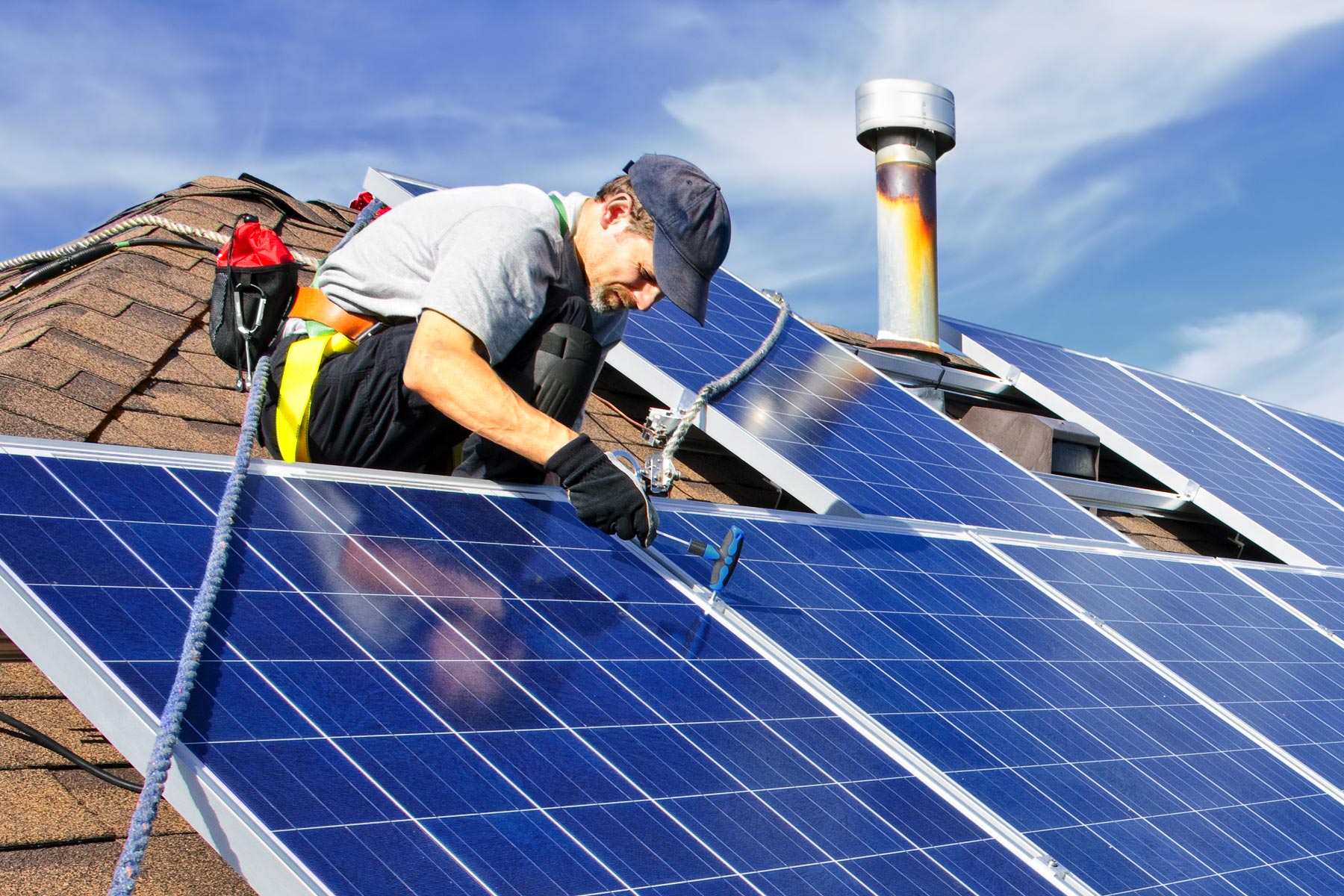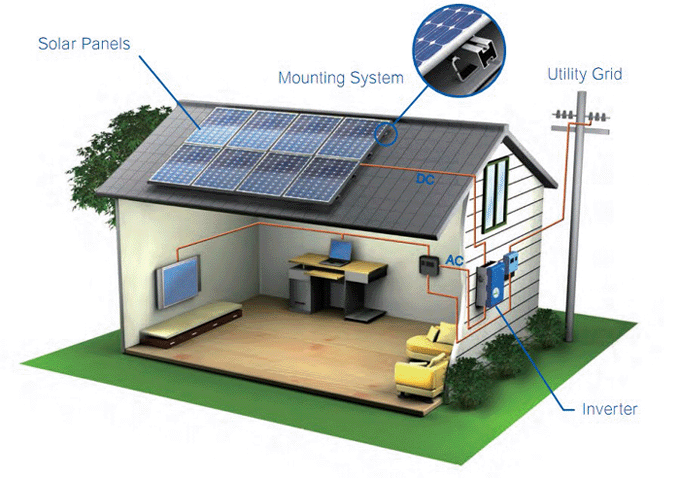How Solar Panels Can Slash Your Energy Bills Dramatically
Wiki Article
Checking Out the Various Sorts Of Solar Panels and Their Special Advantages
The landscape of solar panels uses numerous choices, each with unique advantages suited to different applications. Monocrystalline panels stand out for their efficiency and appearances, while polycrystalline models interest budget-conscious consumers. Thin-film technology gives versatility in installment. Ingenious styles like bifacial and building-integrated photovoltaics further boost the charm of solar energy. Recognizing these differences is crucial for making educated decisions. The inquiry stays: which type will best fulfill particular energy demands?Monocrystalline Solar Panels
Although different kinds of solar panels are offered, monocrystalline solar panels are typically concerned as one of the most effective choice. These panels are made from a solitary crystal structure, commonly silicon, which enables them to transform sunlight right into power more successfully than various other types. The efficiency prices for monocrystalline panels can vary from 15% to over 22%, making them a popular option for business and residential installments where space is restricted.
Polycrystalline Solar Panels
Polycrystalline solar panels are produced utilizing a distinctive production procedure that entails melting multiple silicon crystals with each other. This method can bring about advantages such as reduced production expenses, making them a preferred choice for numerous consumers. Their performance and performance factors may vary compared to other types of solar panels, warranting cautious factor to consider.Production Refine Advantages
The production procedure of polycrystalline solar panels offers numerous benefits that contribute to their appeal in the renewable energy industry. The manufacturing uses silicon scrap, which decreases waste and lowers product expenses, making it economically viable. Unlike monocrystalline panels, the production of polycrystalline panels includes less complex and much less energy-intensive strategies, leading to a smaller carbon footprint. Furthermore, the casting procedure permits the development of multiple cells at the same time, enhancing performance in manufacturing. This method also leads to a more consistent structure, which can boost the total efficiency and longevity of the panels. Polycrystalline solar panels present a cost-efficient solution for consumers while advertising lasting manufacturing techniques within the market.Efficiency and Efficiency Factors
Exactly how do efficiency and efficiency factors influence the effectiveness of polycrystalline solar panels? These panels generally show reduced effectiveness rates, averaging around 15-20%, compared to their monocrystalline counterparts. Variables such as temperature sensitivity, shielding, and the angle of installation significantly influence their performance. Polycrystalline panels tend to do much better in cooler environments but may have a hard time in high temperatures, resulting in lowered output. In addition, their efficiency can be affected by dust and debris buildup, necessitating regular maintenance. In spite of these obstacles, polycrystalline panels are much more budget friendly and supply a strong balance between cost and performance. Recognizing these performance and efficiency factors is important for customers looking for to make the most of solar power manufacturing and overall system effectiveness.Thin-Film Solar Panels
Thin-film solar panels stand for a flexible and lightweight choice in the solar power landscape. These panels are constructed by transferring several slim layers of photovoltaic material onto a substratum, which can include steel, glass, or plastic. This production process permits better versatility in design and applications contrasted to traditional crystalline photovoltaic panels.
Thin-film innovation normally features reduced performance rates, however it makes up for this with decreased manufacturing costs and improved efficiency in low-light conditions. Their lightweight nature makes them ideal for installation on varied surface areas, consisting of curved structures and lorries. Additionally, these panels can be integrated right into building products, supplying aesthetic benefits along with energy generation.
Bifacial Solar Panels
Bifacial solar panels are getting focus for their enhanced effectiveness and efficiency, as they can record sunshine from both sides. This dual-sided design enables for boosted power manufacturing, particularly in reflective atmospheres. Furthermore, their installation uses potential cost benefits, making them an attractive option for different applications.Performance and Efficiency
The performance and efficiency of solar panels are essential consider identifying their efficiency in energy generation, with bifacial solar panels attracting attention for their cutting-edge layout. These panels include solar batteries on both sides, permitting them to capture sunlight from multiple angles. This dual-sided capability enhances power result, especially in atmospheres with reflective surfaces, such as snow or sand. Bifacial solar panels can increase power manufacturing by 10-20% compared to traditional monofacial panels. Their capability to harness indirect sunlight contributes to their total effectiveness, making them a compelling option for various applications. Developments in modern technology continue to boost their efficiency metrics, strengthening their area in the sustainable energy landscape as a very reliable service for solar power generation.installation and Expense Benefits
When taking into consideration the benefits of bifacial solar panels, the installation process and cost advantages are significant aspects that can affect decision-making for both business and property applications. Bifacial panels can be placed on different frameworks, including rooftops and ground installments, permitting functional deployment. Their capability to absorb sunshine from both sides boosts power generation without needing added panels. This effectiveness can bring about minimized general installation prices, as fewer systems may be required to achieve preferred power outputs. In addition, their toughness frequently equates to decrease maintenance expenditures over time (Solar Installer). As an outcome, the long-lasting economic advantages, combined with installation versatility, make bifacial solar panels an attractive selection for those seeking sustainable power servicesBuilding-Integrated Photovoltaics (BIPV)
Building-Integrated Photovoltaics (BIPV) represent a considerable evolution in solar technology, seamlessly incorporating solar batteries into building materials such as frontages, roof coverings, and home windows. This cutting-edge approach not only produces renewable energy yet also improves the looks and performance of buildings. BIPV systems can replace standard structure products, decreasing the total price of building and construction while contributing to energy efficiency.The integration of solar technology right into architectural design enables far better room usage, as these systems can be mounted without needing additional land. Additionally, BIPV remedies are customizable, making it possible for designers to create special layouts that complement the building's overall look. The double performance of BIPV-- serving both as a power generator and a structural part-- uses substantial advantages in city settings where room is restricted. As awareness of sustainable building methods grows, BIPV is becoming an increasingly Related Site appealing choice for developers and house owners alike.
Concentrated Photovoltaic (CPV) Systems
Concentrated Photovoltaic (CPV) systems stand for an advanced solar innovation that mirrors or uses lenses to concentrate sunlight onto high-efficiency solar cells. This cutting-edge approach permits the collection of substantially even more solar energy than typical photovoltaic systems. By concentrating sunlight, CPV systems can accomplish greater efficiencies, often surpassing 40%, making them especially suitable for locations with high straight sunshine.Additionally, CPV systems typically need much less acreage contrasted to traditional photovoltaic panels, as they generate more power from a smaller impact. These systems frequently integrate tracking systems that change the setting of the lenses or mirrors to adhere to the sunlight's movement, making best use of energy capture throughout the day. However, CPV modern technology is best over here matched for details geographical locations, where direct sunlight is bountiful, restricting its applicability in areas with constant cloud cover. Generally, CPV systems provide a promising alternative for boosting solar power manufacturing in excellent settings
Contrast of Solar Panel Efficiency and Price
Different solar panel innovations exist, their efficiency and expense can greatly vary, affecting consumer selections and market dynamics. One of the most typical types-- polycrystalline, thin-film, and monocrystalline-- exhibit unique qualities in efficiency and pricing. Monocrystalline panels have a tendency to supply the greatest performance rates, commonly surpassing 20%, but they generally feature a greater cost. In comparison, polycrystalline panels are normally more budget friendly, with effectiveness around 15-20%, making them a popular option for budget-conscious customers. Thin-film technologies, while less effective at about 10-12%, offer versatility and lower installation costs, attracting certain applications.Inevitably, selecting the ideal solar panel entails evaluating the equilibrium in between efficiency and cost. Consumers need to consider their power requires, spending plan restraints, and long-term savings potential, as these variables will dictate the very best option for their solar power system.
Often Asked Inquiries
For How Long Do Solar Panels Usually Last Before Needing Substitute?
Solar panels typically last between 25 to 30 years before requiring replacement. Their sturdiness depends upon different factors, including quality, installation, and regional environmental conditions, which about his can influence their performance and durability with time.
Can Solar Panels Operate In Cloudy or Rainy Issues?
Solar panels can without a doubt function in gloomy or rainy problems, albeit at minimized efficiency. They still catch scattered sunshine, permitting power generation, though energy result might be considerably reduced than on warm days.What Maintenance Is Needed for Solar Panels?
Regular maintenance for solar panels consists of routine cleaning to eliminate dirt and particles, evaluating for damages, making sure connections are protected, and assessing system performance. Regular exams can boost efficiency and prolong the lifespan of the panels.Exist Any Type Of Ecological Effects From Manufacturing Solar Panels?
Yes, manufacturing solar panels can have ecological impacts, including resource removal, power usage, and waste generation. Innovations in technology goal to decrease these results, promoting even more lasting methods in production and recycling procedures.Exactly how Do I Choose the Right Photovoltaic Panel for My Home?

Various kinds of solar panels are readily available, monocrystalline solar panels are typically concerned as the most efficient alternative. Thin-film solar panels represent a functional and lightweight option in the solar power landscape. The efficiency and efficiency of solar panels are essential elements in establishing their efficiency in energy generation, with bifacial solar panels standing out for their innovative layout. Building-Integrated Photovoltaics (BIPV)
Building-Integrated Photovoltaics (BIPV) represent a stand for evolution considerable solar technology, innovation incorporating solar cells into building right into such as windows, facades, and roofs. Concentrated Photovoltaic (CPV) systems represent a sophisticated solar innovation that makes use of lenses or mirrors to concentrate sunlight onto high-efficiency solar cells.
Report this wiki page